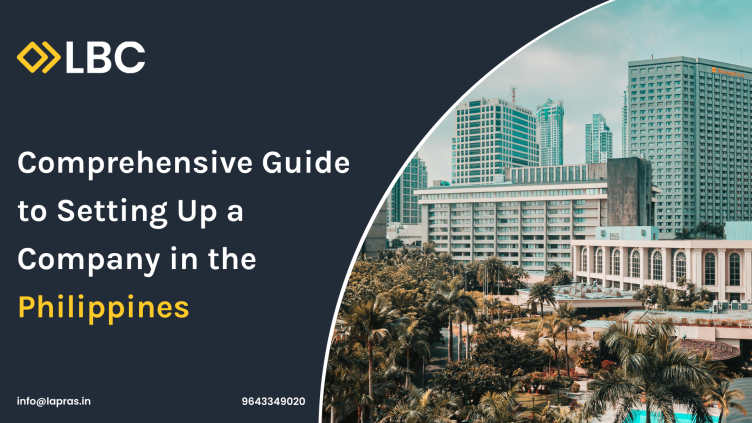of business structures, each with unique characteristics, requirements, and advantages. Choosing the right type of entity depends on your business goals, ownership structure, and capital investment.
1.1 Sole Proprietorship
- Definition: A business owned and managed by one individual. The owner is personally responsible for all liabilities and debts of the business.
- Ownership: 100% Filipino.
- Key Features:
- Easy to set up and manage.
- No distinction between the owner and the business entity.
- Cannot be owned by a foreigner.
1.2 Partnership
- Definition: A business owned by two or more individuals or entities.
- Types:
- General Partnership: All partners share equal responsibility and liability.
- Limited Partnership: At least one partner has unlimited liability, while others have liability limited to their contributions.
- Ownership Requirements:
- Foreign ownership allowed, but subject to restrictions based on the business activity.
1.3 Corporation
- Definition: A separate legal entity owned by shareholders, where liability is limited to their investments.
- Types:
- Domestic Corporation: At least 60% owned by Filipino nationals.
- Foreign-Owned Corporation: More than 40% foreign ownership, subject to compliance with the Foreign Investment Negative List (FINL).
- One-Person Corporation (OPC): A corporation with only one shareholder (Filipino or foreigner).
- Ownership Requirements: Foreigners can own up to 100%, depending on the industry and compliance with the FINL.
- Capital Requirements:
- PHP 5,000 minimum for domestic corporations.
- PHP 2.5 million for retail trade businesses.
- USD 200,000 for corporations with foreign ownership exceeding 40%.
1.4 Branch OfficeThe Philippines offers a thriving business environment with a growing economy, a strategic location in Southeast Asia, and a skilled, English-speaking workforce. However, setting up a business as a non-resident requires navigating various legal and regulatory requirements. Below is an in-depth guide covering the types of companies, legal obligations, and a detailed step-by-step process to register and operate a company in the Philippines.
1. Types of Business Entities in the Philippines
The Philippines offers a variety
- Definition: A foreign corporation’s extension that is allowed to earn income in the Philippines.
- Ownership: 100% foreign-owned.
- Capital Requirement: USD 200,000 inward remittance.
- Tax Treatment: Subject to Philippine corporate income tax.
1.5 Representative Office
- Definition: A foreign corporation’s office in the Philippines that performs marketing, promotion, and liaison functions. It is not allowed to earn income locally.
- Ownership: 100% foreign-owned.
- Capital Requirement: USD 30,000 inward remittance.
1.6 Regional Headquarters (RHQ)
- Definition: A supervisory office for overseeing regional operations. Cannot generate income.
- Ownership: 100% foreign-owned.
- Capital Requirement: USD 50,000 inward remittance annually.
1.7 Regional Operating Headquarters (ROHQ)
- Definition: Provides services such as marketing, data processing, and training to affiliates or subsidiaries. Can earn income from these activities.
- Ownership: 100% foreign-owned.
- Capital Requirement: USD 200,000 inward remittance.
2. Mandatory Requirements for Foreigners
Foreign investors must comply with the following legal requirements when establishing a business in the Philippines:
2.1 Foreign Ownership Restrictions
The Foreign Investment Negative List (FINL) specifies industries with limitations or prohibitions on foreign ownership. Key provisions include:
- Full foreign ownership is allowed in industries not listed on the FINL.
- Restrictions apply to industries such as retail trade, natural resource exploitation, mass media, and public utilities.
- Retail businesses require a minimum paid-up capital of USD 2.5 million.
2.2 Minimum Paid-Up Capital Requirements
The minimum capital requirement varies by business type and foreign ownership percentage:
- Domestic Corporation (60% Filipino-owned): PHP 5,000.
- Domestic Corporation (more than 40% foreign ownership): USD 200,000.
- Export Enterprises (at least 60% export of goods/services): USD 100,000.
- Representative Office: USD 30,000.
- Branch Office: USD 200,000.
2.3 Visas and Permits for Foreigners
- Special Investor’s Resident Visa (SIRV):
- Requires an investment of at least USD 75,000 in a Philippine business.
- 9G Work Visa:
- For foreign employees working in the Philippines.
- Alien Employment Permit (AEP):
- Required for foreigners seeking employment in the Philippines.
2.4 Physical Office Address
All businesses must have a registered office in the Philippines. This can be a leased office space or a virtual office (for certain business types).
2.5 Corporate Structure Requirements
- For corporations:
- At least 2 to 15 shareholders.
- At least one resident director or trustee.
- A corporate treasurer and corporate secretary (must be residents).
3. Step-by-Step Process for Setting Up a Business
Step 1: Choose the Appropriate Business Structure
Evaluate your business goals, ownership structure, and capital requirements to determine the most suitable entity.
Step 2: Reserve and Register the Business Name
- Sole Proprietorship: Register with the Department of Trade and Industry (DTI).
- Corporations and Partnerships: Reserve the business name with the Securities and Exchange Commission (SEC).
Step 3: Prepare Incorporation Documents
- Articles of Incorporation (for corporations).
- Bylaws (for corporations).
- Treasurer’s Affidavit.
- Proof of Paid-Up Capital (e.g., bank certificate).
Step 4: Submit Documents to the SEC
- File all incorporation documents with the SEC.
- Pay the corresponding registration fees.
Step 5: Register for Barangay Clearance
- Visit the barangay (local administrative unit) where your business is located and apply for barangay clearance.
- Provide proof of SEC/DTI registration, lease contract, and valid IDs.
Step 6: Secure the Mayor’s Permit
- Visit the local government unit (LGU) and apply for a Mayor’s Permit.
- Requirements include:
- Barangay clearance.
- Lease agreement.
- Fire safety inspection certificate.
- Sanitary permit.
Step 7: Register with the Bureau of Internal Revenue (BIR)
- Obtain a Tax Identification Number (TIN).
- Register for VAT (if annual gross sales exceed PHP 3 million).
- Apply for Authority to Print (ATP) official receipts.
Step 8: Register with Social Security Agencies
If you plan to hire employees, register with the following agencies:
- Social Security System (SSS): Mandatory for all employers and employees.
- PhilHealth: Provides health insurance benefits.
- Pag-IBIG Fund: A government housing loan program.
Step 9: Open a Corporate Bank Account
- Choose a Philippine bank and submit the incorporation documents, board resolutions, and IDs of authorized signatories.
Step 10: Hire Employees (if applicable)
- Follow Philippine labor laws, including minimum wage, benefits, and working conditions.
- Apply for Alien Employment Permits (AEP) and work visas for foreign employees.
5. Taxation and Compliance
- Corporate Income Tax:
- 25% (for income above PHP 5 million).
- 20% (for smaller domestic corporations).
- Value-Added Tax (VAT): 12% for businesses earning over PHP 3 million annually.
- Withholding Taxes: Applicable to salaries, rent, and supplier payments.
6. Incentives for Foreign Investors
- BOI Registration:
- Tax holidays and duty-free importation of equipment.
- PEZA Registration:
- Special economic zone incentives, including reduced tax rates.
Conclusion
Setting up a business in the Philippines as a non-resident requires careful planning, compliance with local laws, and thorough documentation. Consulting with a local legal or business advisory firm is highly recommended to streamline the process and ensure compliance with all regulatory requirements.


